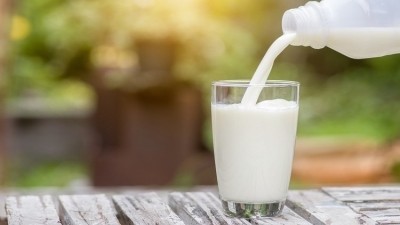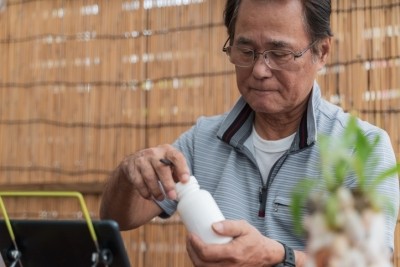Shrink survivors: a2 milk snaps up greater market share in China’s infant formula sector

The growth mainly came from the sales of its China label infant formulas across the domestic online channels, such as Tmall, JD, Douyin – the China version of TikTok, as well as mother and baby stores.
Sales of its China label infant formula, known as a2至初, were up 43.5 per cent to NZD$270.7 million (US$169.4m), the company announced in financial results for the first half of financial year 2023, which was between June 2022 to December 2022.
Its China label infant formula have been growing steadily in sales for the past few years, from NZD$73m (US$45.7m) in the first half of financial year 2019, to NZD$147m (US$92m) in 2020, and subsequently to NZD$213m (US$133.3m) in 2021.
It dropped to NZD$189m (US$118.3m) last year as it rebalanced channel inventory to improve channel dynamics.
Between June to December last year, the firm’s growth in China was led by greater in-store distribution and investment in consumer marketing and e-commerce.
This is against the backdrop of a shrinking infant formula market across China’s key retail channels for this sector.
According to China National Bureau of Statistics, the number of births in China had declined by 10 per cent in last year to 9.6 million.
The overall China infant milk formula market also declined by 11 per cent in volume and 12.5 per cent in value in this period, the firm said, citing data from Kantar Worldpanel.
For a2mc, it managed to take up a greater market share in mother and baby stores, as seen in its moving annual total (MAT) value share which was up from 2.5 per cent in December 2021 to 3.2 per cent by December 2022.
The MAT measures variables, such as sales for a product, over the course of 12 months.
As of last December, 26,800 mother and baby stores were selling a2 infant formula products, up from 24,600 stores in December 2021.
The bulk of these stores are located in lower tier cities, where the firm’s MAT value share was up from 1.9 per cent to 2.5 per cent between 1H22 and 1H23.
Elsewhere in key and tier A cities, the firm’s MAT in MBS was also up from 6.3 per cent to 7.4 per cent in this period.
Last year, the company has launched a number of new products, such as the a2 platinum refreshed range available in Australia, New Zealand, China, and a2 Nutrition for Mothers China label launched in last September.
Online growth outpaced offline sales
Comparing offline and online sales, the ASX and NZEX listed company said its online growth had outpaced offline sales, due to strong market share gains in the domestic offline channels.
In fact, the strong share gains are said to be “closing the gap” between domestic offline channels and that of mother and baby stores.
Its MAT value share in these online channels grew from 2.5 per cent in 2H22 to three per cent in 1H23. This also mirrors the bigger domestic online channels performance in China during this period, which was up 4.4 per cent.
For instance, on JD, the firm’s MAT value share was up from 2.1 per cent in December 2021 to 3.1 per cent in December 2022, while that of Tmall had also increased from 1.9 per cent to three per cent.
The company highlighted that growing its online market share would be a strategic priority.
“Accelerating online growth is a strategic priority for China label IMF and performance in DOL is a key measure of success,” it said.
“We are pleased with progress in implementing our refreshed growth strategy focused on the China market and improving our execution in the face of significant market headwinds and COVID-19 related challenges.
“Our performance in the China IMF category has been a significant highlight – growing sales 18.0 per cent while the market was down 12.5 per cent driven by strong growth in our China label MBS and DOL channels,” said David Bortolussi, managing director and CEO.
Group performance
The company’s group revenue growth was up 18.6 per cent to NZ$783.3m (US$490.2m) in the first half of financial year 2023.
Gross margin was 47.6 per cent, higher than 46.2 per cent reported in the same period last year.
Net profit after tax (NPAT) was up 22.1 per cent to NZD$68.5m (US$42.9).
Aside from China, other parts of Asia and the US were also responsible for the company’s revenue growth, while sales were down in the Oceania.
China along with other parts of Asia contributed sales amounting to NZD$471.6m (US$216.4m), which was an increase of 54 per cent.
The company forecasts a low double-digit revenue growth for FY23, with growth seen in China label infant milk formula, liquid milk sales in the Oceania and the US.
The next major milestone for the company is to achieve a revenue of NZD$2 billion (US$1.25bn)
If this is to be achieved in FY26, the firm said it would need to hit a CAGR of 8.5 per cent.
What’s popular in China…and in which channels
The company noticed that different infant formula products were popular in different sales channels.
In the case of mother and baby stores, the firm said that its stage three formula was the primary driver of share gains.
For instance, the MAT value share of its stage three formula was up from 2.9 per cent to 3.8 per cent in mother and baby stores.
In contrast, growth of MAT value share for its stage 1 and 2 formulas was smaller, up from 2.2 per cent to 2.6 per cent for stage 1 formula and 2.2 per cent to 2.7 per cent in stage 2 formula.
“Smaller gains were delivered in Stage 1 and Stage 2, reflective of increasing competition in a declining market.
“a2MC is refining its approach to new user acquisition going into 2H23 and FY24 to optimise efficiency,” said the company.
In contrast to mother and baby stores, share growth in the domestic online channels was driven by the sale of early stages formulas.
For instance, MAT value of its stage 1 formula was up from 2.3 per cent in December 2021 to 3.6 per cent in December 2022, while that of stage 2 formulas was up from 2.6 per cent to 4.2 per cent.
The firm believes that this is “a healthy indicator that the channel is growing through recruiting new users, rather than switching consumers from offline channels.”
Daigou and cross-border
Outside of China, the company sells its English label infant formulas into China via daigou and cross-border e-commerce (CBEC).
Due to COVID-19, there has been a shift from the once popular daigou channel to CBEC.
“CBEC and other labels revenue increased by 71.5 per cent to $175.6 million, reflecting the continued refinement of the English label distribution model and the deliberate shift in sales to CBEC authorised distributors from ANZ resellers, improved sales through CBEC and O2O, and positioning benefits associated with refreshed a2 Platinum®.
“ANZ IMF revenue decreased 39.2 per cent to $109.4 million, reflecting market decline in Daigou channel and the continued shift of sales to the CBEC channel,” the firm said in the report.


















